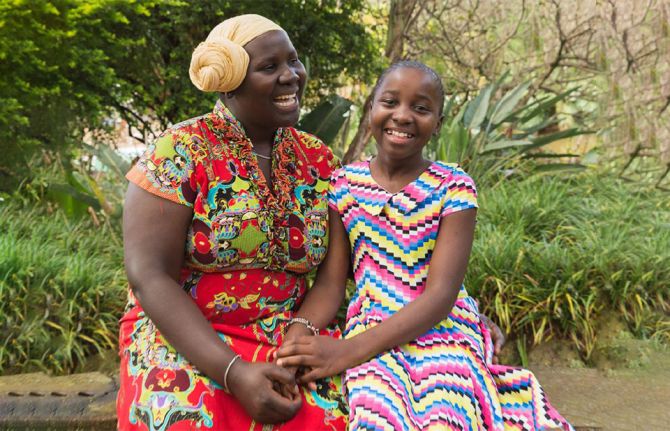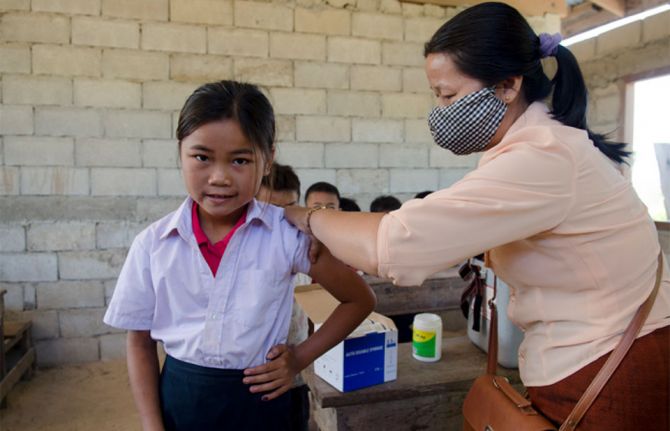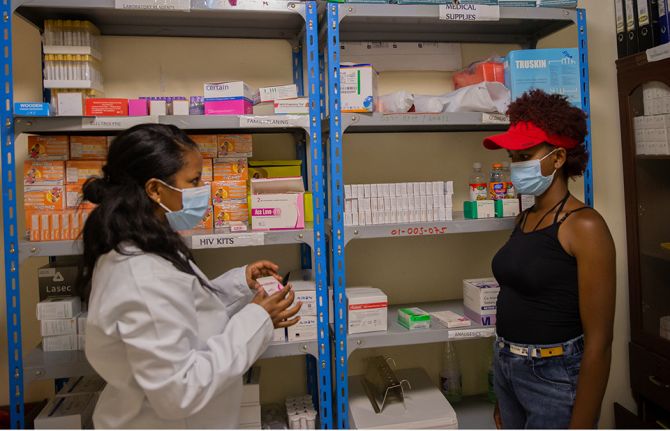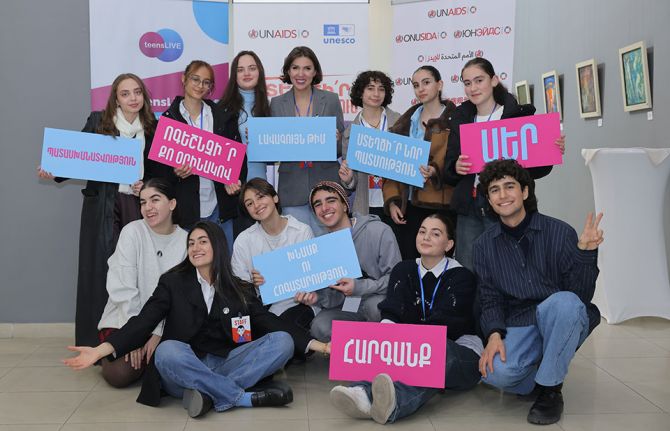



Feature Story
United for ending cervical cancer, HIV and inequities for women and girls
17 November 2022
17 November 2022 17 November 2022On this Day of Action, as we celebrate a two-year anniversary of the launch by the World Health Organization (WHO) of the Global Strategy to accelerate the elimination of cervical cancer as a public health problem, we are reminded that despite the availability of the knowledge, tools and technologies, cervical cancer still kills more than 342 000 women a year (in 2020) globally. Every two minutes one woman loses her life to cervical cancer - a disease that is preventable and curable.
The high burden of cervical cancer is driven by gender, social and economic inequalities and health disparities in access to HPV vaccines, screening, care and modern prevention and treatment technologies. Because of those inequalities, women and girls in low- and middle-income countries (LMICs) remain most affected. Nine out of 10 women who die of cervical cancer reside in LMICs. Cervical cancer is the number one cause of cancer-related death among women living in sub-Saharan Africa.
The WHO Global Strategy to eliminate cervical cancer launched by the WHO on 17 November, 2020 was supported among many by the UN partner organizations including IAEA, UNAIDS, UNFPA , UNICEF, and Unitaid. The UN Joint Action Group comprised of these six UN entities each bringing in its unique mandates and resources, is committed to supporting countries efforts in meeting by 2030 the global cervical cancer elimination targets – whereby 90% of girls are fully vaccinated against HPV by age 15, 70% of women are screened with a high-performance test between the ages of 35 to 45, and 90% of women identified as having cervical disease receive treatment. If these targets are met, 300 000 deaths from cervical cancer could be averted by 2030, 14 million by 2070, and over 62 million by 2120.
“In countries with high rates of HIV, over 50% of cervical cancer cases are reported among women living with HIV. Women living with HIV are six times more likely to develop cervical cancer and to develop it at younger age than those without HIV. It is unacceptable to claim that we have saved a woman’s life by enabling access to antiretroviral therapy for HIV alone, if we then leave her to die from cervical cancer. Our joint focus is on breaking down silos, building bridges between HIV and cervical cancer programmes, and bringing the two communities together because we know that linkages save lives.” – Winnie Byanyima, UNAIDS Executive Director
“No woman should die of cervical cancer when we have a highly effective HPV vaccine and quality diagnostics. We need prevention and early detection - this is how we ensure that this disease is eliminated globally. Governments and partners need to invest in accelerated access to resilient primary health care that delivers integrated care like routine immunization and sexual and reproductive health. And we must commit robust long-term human resources for adequate and accessible health care workers in communities and at facility level. Funding for health and health equity are prerequisites for cervical cancer elimination around the world.” - Dr Aboubacar Kampo, Director of Health Programme, UNICEF New York HQ
“We have the tools and technologies to end cervical cancer. Now it is a question of access. Unitaid stepped up the moment WHO issued its call to action, and within just a few years we have introduced effective technologies and developed screen-and-treat models that work in resource-limited settings. The last piece of the puzzle is scale up – we need to see a concerted global effort so every last woman can benefit from life-saving preventive care and we can end cervical cancer for generations to come.” – Dr Philippe Duneton, Executive Director, Unitaid
“Despite being one of the leading causes of death from cancer for women in low- and medium-income countries (LMICs), cervical cancer is also one of the most preventable and treatable cancer types. Nuclear applications such as diagnostic imaging can help detect the cancer at an early stage and increase survival rates. Radiotherapy can successfully treat women with cervical cancer, even in advanced cases. With our Rays of Hope initiative, we aim to increase access to these technologies worldwide and close the unacceptable gap of inequality.”- Najat Mokhtar, IAEA Deputy Director General and Head of the Department of Nuclear Sciences and Applications
“On this second anniversary of the Global Strategy for Cervical Cancer Elimination, the UN Joint Action Group (UNJAG)* celebrates the successes achieved. As the world population continues to grow, more girls and women will require life-saving vaccination, screening and treatment. We acknowledge the need for effective mobilization of resources and partners to achieve the 90-70-90 global elimination targets. Going forward we will continue to focus our attention and joint efforts on ensuring full prevention, high quality life-saving services and equity in access to modern technologies for women and girls across the world.” – Petra ten Hoope-Bender, UNJAG Chair, Technical Adviser Sexual and Reproductive Health and Rights, UNFPA.
* IAEA, UNAIDS, UNFPA, UNICEF, UNITAID and WHO



